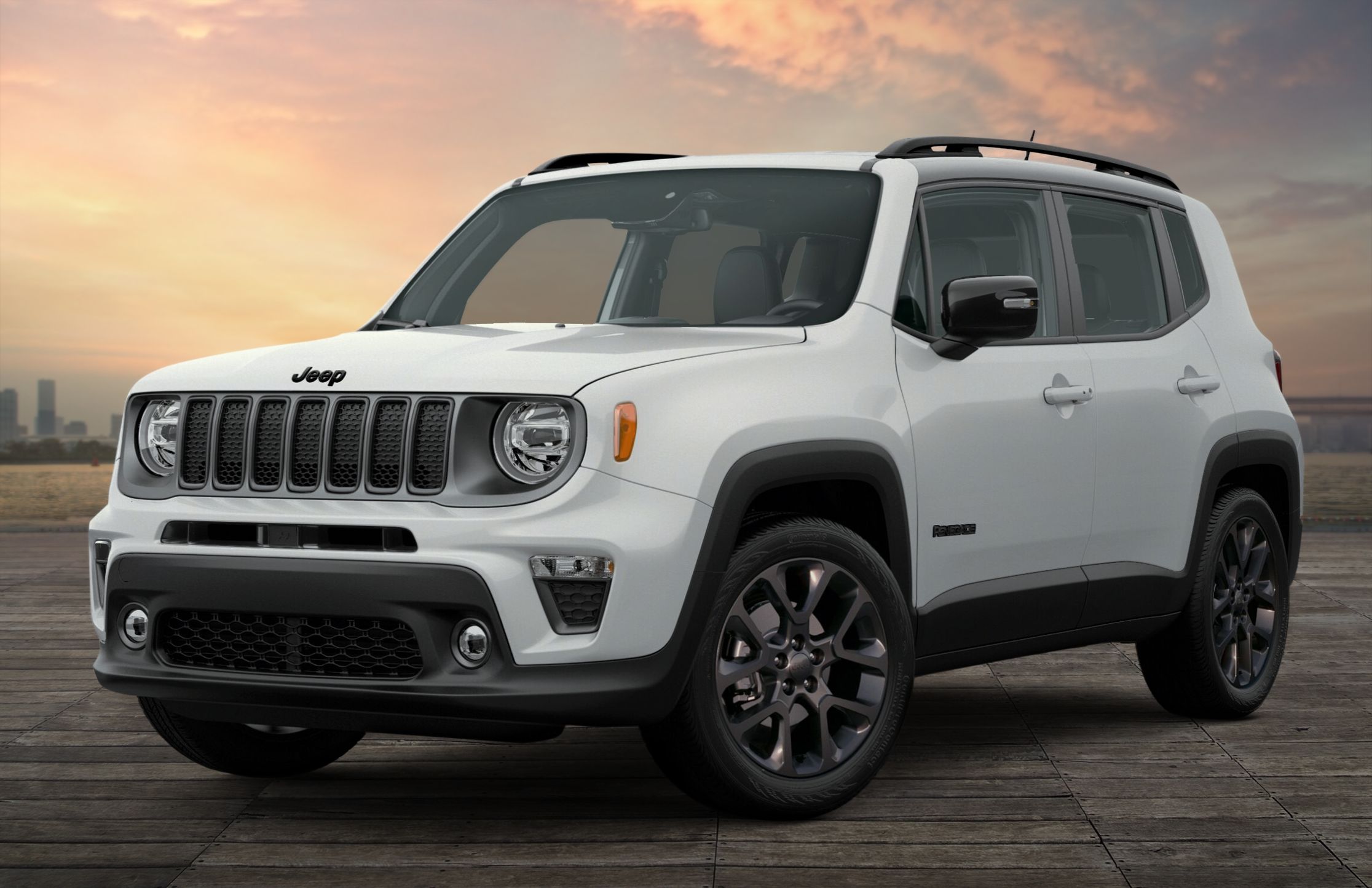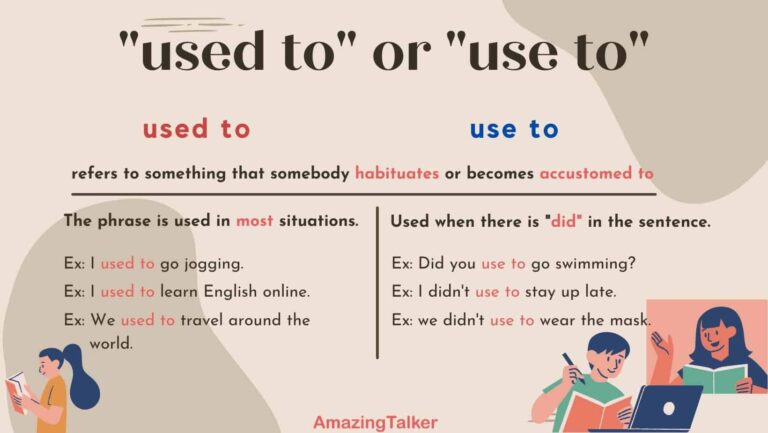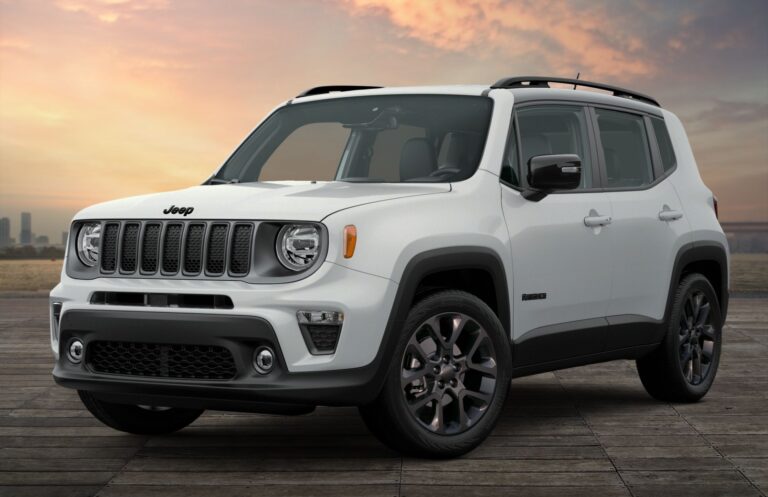Jeep CJ5 Body For Sale: Your Ultimate Guide to Restoration and Rebirth
Jeep CJ5 Body For Sale: Your Ultimate Guide to Restoration and Rebirth jeeps.truckstrend.com
The roar of its engine, the wind in your hair, the rugged simplicity – few vehicles embody the spirit of adventure quite like the Jeep CJ5. A true icon of American automotive history, the CJ5, produced from 1955 to 1983, captured the hearts of off-road enthusiasts and casual drivers alike. Its compact size, robust four-wheel-drive system, and utilitarian design made it a legend. Today, many CJ5s are cherished classics, but decades of service, harsh weather, and demanding trails often take their toll, leaving their steel bodies susceptible to the dreaded enemy: rust.
This is where the search for a "Jeep CJ5 body for sale" begins. Whether you’re embarking on a full frame-off restoration, replacing a severely rusted tub, or kickstarting a custom build, finding the right body is a critical first step. This comprehensive guide will navigate you through the world of CJ5 body procurement, offering insights, practical advice, and everything you need to know to bring your vintage Jeep dream to life.
Jeep CJ5 Body For Sale: Your Ultimate Guide to Restoration and Rebirth
The Enduring Appeal of the Jeep CJ5
The Jeep CJ5’s legacy is undeniable. Born from the military Willys MB, it evolved into a civilian workhorse and an off-road beast. Its short wheelbase, narrow stance, and legendary drivetrain made it incredibly agile and capable in challenging terrain. From farm fields to mountain trails, the CJ5 proved its mettle. Enthusiasts adore its mechanical simplicity, making it a favorite for DIY repairs and modifications. This enduring appeal means there’s a vibrant community dedicated to keeping these classic Jeeps alive, and the demand for parts, including entire bodies, remains strong.
Why Buy a Standalone CJ5 Body?
The decision to purchase a standalone CJ5 body usually stems from one of several key motivations:
- Full Restoration Projects: For many purists, bringing a vintage CJ5 back to its original glory is a labor of love. Often, the frame, engine, and drivetrain might be salvageable, but the body is too far gone due to rust, collision damage, or extensive modifications. A new or better-condition body provides a solid foundation for an authentic restoration.
- Rust Repair and Replacement: Rust is the archenemy of older steel vehicles, and CJ5s are no exception. Common rust spots include floorboards, hat channels, rocker panels, rear corners, and the cowl. While patch panels are available, sometimes the extent of the damage makes a full body replacement more cost-effective and structurally sound than extensive welding and patching.
- Custom Builds and Hot Rods: For those looking to create a unique CJ5, starting with a bare body offers a clean slate. This allows for custom modifications, engine swaps, suspension upgrades, and personalized paint schemes without the hassle of repairing an existing, damaged body.
- Salvage Titles or Frame-Off Builds: If you acquire a CJ5 with a salvage title due to body damage but a sound frame and drivetrain, purchasing a new body can be a viable path to getting it back on the road. Similarly, a frame-off build demands a perfect body to complement a meticulously restored chassis.

Types of CJ5 Bodies Available
When searching for a Jeep CJ5 body, you’ll primarily encounter three types, each with its own advantages and disadvantages:
1. Original/Used Steel Bodies
- Description: These are bodies salvaged from other CJ5s, either from junkyards, private sales, or donor vehicles. They are genuine OEM steel.
- Pros: Authenticity, original look and feel, often come with some original hardware.
- Cons: Almost guaranteed to have rust (varying degrees), dents, previous repairs (some good, some bad), and require significant prep work (sandblasting, welding, bodywork) before paint. Finding one truly "rust-free" is like finding a unicorn.
- Where to Find: Salvage yards, online marketplaces (eBay, Facebook Marketplace, Craigslist), Jeep forums, private sellers.
2. Reproduction Steel Bodies
- Description: Brand new steel bodies manufactured to original CJ5 specifications. These are made by third-party companies using modern stamping techniques.
- Pros: No rust, new steel, accurate dimensions, strong and durable, provide a perfect starting point for any project.
- Cons: Higher upfront cost than most used bodies, may require minor fitment adjustments, can be heavy for shipping.
- Manufacturers/Distributors: Omix-ADA, MD Juan, Crown Automotive, Quadratec, Morris 4×4 Center.
3. Fiberglass Bodies
- Description: Bodies molded from fiberglass composite materials, designed to replicate the original CJ5 dimensions.
- Pros: Absolutely no rust issues, significantly lighter than steel (improving performance and fuel economy), easier to repair minor damage, often cheaper upfront than new steel bodies.
- Cons: Not original material, can crack on severe impact (unlike steel which dents), may feel less "solid" to some purists, heat dissipation differences (though often not an issue for typical use), can be more flexible, requiring careful mounting.
- Manufacturers/Distributors: Gr8tops (formerly Advanced Adapters), and various smaller custom shops.
Key Considerations When Buying a CJ5 Body
Before you pull the trigger on a purchase, keep these vital points in mind:
- Condition (for Used Steel): This is paramount. Look for detailed photos of common rust areas: floorboards, hat channels (underside supports), rocker panels, rear corners, cowl, and areas around the body mounts. Ask about previous repairs and inspect for excessive bondo or poor welds. If possible, inspect in person.
- Completeness: Is it just the tub (main body section), or does it include fenders, grille, windshield frame, and tailgate? The more complete, the less you’ll have to source separately, but the higher the price and shipping cost.
- Year Specifics: While many CJ5 components are interchangeable, there were subtle differences across its long production run. Dashboards, cowl shapes, windshield hinge locations, and rear fender flares changed over the years. Ensure the body year is compatible with your frame, existing components, and your desired aesthetic.
- Manufacturer (for Reproduction/Fiberglass): Research the reputation of the manufacturer. Look for reviews regarding fitment, quality control, and customer service. A good warranty is a bonus.
- Shipping and Logistics: Bodies are large and heavy. Freight shipping costs can be substantial, sometimes exceeding the cost of the body itself. Get detailed shipping quotes before purchasing. Local pickup can save a lot of money if feasible.
- Budget: Set a realistic budget that includes not just the body, but also shipping, any necessary repairs, bodywork, primer, paint, and new hardware (body mounts, bolts, etc.).
Where to Find a Jeep CJ5 Body For Sale
The hunt for the perfect CJ5 body can be an adventure in itself:
- Online Marketplaces:
- eBay: A vast selection, but be wary of shipping costs and inspect photos meticulously.
- Facebook Marketplace: Excellent for local finds, allowing for easier inspection and pickup. Join specific Jeep CJ groups for better results.
- Craigslist: Similar to Facebook Marketplace, good for local deals.
- Specialized Jeep Parts Retailers: Companies like Quadratec, Morris 4×4 Center, and Summit Racing often stock new reproduction steel and fiberglass bodies, or can order them for you.
- Jeep Forums & Enthusiast Groups: Online forums (e.g., Early CJ5, JeepForum) and dedicated Facebook groups are invaluable. Members often sell parts, and you can get advice or leads from experienced builders.
- Salvage Yards/Junkyards: A traditional treasure hunt. Call ahead to see if they have any CJ5s, or visit in person. You might find a diamond in the rough, but prepare for rust.
- Classic Car/Jeep Shows & Swap Meets: Great places to network, find parts, and sometimes even complete bodies for sale.
The Process: From Purchase to Installation
Once you’ve acquired your CJ5 body, the real work begins:
- Thorough Inspection: Even if you inspected it before purchase, give it another once-over upon arrival. Document any damage or discrepancies.
- Preparation (Used Steel): This is the most labor-intensive. It involves sandblasting to reveal all rust and previous repairs, cutting out rusted sections, welding in new patch panels, body filler work, and extensive sanding to achieve a smooth surface.
- Preparation (New Steel/Fiberglass): While much less work, new bodies still require scuffing, cleaning, and potentially minor bodywork to ensure a perfect paint surface. Some may need minor trimming for perfect fitment.
- Mounting: Carefully align the body on your frame. Use new body mounts and hardware. Ensure even gaps and proper alignment with the fenders and grille. This step is crucial for the overall structural integrity and appearance of your Jeep.
- Component Transfer/Installation: This involves transferring all the internal and external components from your old body or installing new ones: dashboard, steering column, wiring harness, seats, seat belts, pedals, roll bar, and exterior lights.
- Painting: This can be done professionally or as a DIY project. Proper priming and painting are essential for durability and aesthetics.
Potential Challenges and Solutions
- Finding a Truly Rust-Free Original: It’s exceedingly rare. Solution: Be realistic. Most used bodies will require rust repair. Consider reproduction steel or fiberglass if zero rust is a top priority.
- High Shipping Costs: Freight shipping can be a shock. Solution: Factor it into your budget from the start. Look for sellers within reasonable driving distance for local pickup, or consider a "less complete" body to reduce weight.
- Fitment Issues with Reproduction Parts: While generally good, reproduction parts can sometimes require minor adjustments. Solution: Patience, test fitting, and be prepared for minor fabrication or trimming. Don’t force anything.
- Hidden Damage (for used bodies): What you see isn’t always what you get. Solution: Ask for detailed photos from multiple angles, inquire about its history, and if possible, inspect in person. Look for signs of extensive bondo.
- Budget Overruns: Restoration projects often cost more than anticipated. Solution: Create a detailed budget, add a 20-30% contingency fund, and prioritize spending.
Practical Advice and Actionable Insights
- Do Your Research: Understand the different types of bodies, their pros and cons, and what’s compatible with your specific CJ5 year.
- Measure Twice, Cut Once: Or in this case, inspect twice, buy once. Thoroughness upfront saves headaches later.
- Join the Community: Engage with online Jeep forums and local clubs. Their collective knowledge is invaluable for advice, troubleshooting, and even finding parts.
- Don’t Rush the Process: Finding the right body, preparing it, and installing it properly takes time. Patience will pay off in a higher quality finished product.
- Factor in ALL Costs: Beyond the body itself, remember shipping, body mounts, paint, primer, body filler, sandblasting, and any specialized tools you might need.
Price Table: Estimated Jeep CJ5 Body Costs (USD)
Please note: These are estimated price ranges and can vary significantly based on condition, completeness, seller, location, and market demand. Always get specific quotes.
| Body Type | Condition/New | Estimated Price Range (USD) | Key Considerations |
|---|---|---|---|
| Original Steel Tub | Heavily Rusted | $500 – $1,500 | Likely requires extensive rust repair, welding, and bodywork. High labor cost. |
| Original Steel Tub | Moderate Rust | $1,500 – $3,000 | Manageable rust, but still needs sandblasting and patch panels. |
| Original Steel Tub | Minimal/Surface | $3,000 – $6,000+ | Rare find. Might only need sandblasting and minor bodywork. Premium price. |
| Reproduction Steel Tub | Brand New | $4,000 – $6,500 | No rust, excellent foundation. Shipping costs are significant. |
| Fiberglass Tub | Brand New | $3,000 – $5,500 | Lightweight, no rust. Different feel than steel. |
| Reproduction Steel Body Kit | Brand New (Tub, Fenders, Grille, Windshield Frame) | $7,000 – $10,000+ | Most comprehensive new steel option. Saves sourcing individual panels. High shipping. |
Frequently Asked Questions (FAQ)
Q: Is a fiberglass body as good as a steel body for a CJ5?
A: "Good" depends on your priorities. Fiberglass will never rust, is lighter, and easier to repair minor cracks. However, it’s not original material, can sometimes feel less rigid than steel, and may crack on severe impact where steel would dent. For a show vehicle or purist restoration, steel is preferred. For a trail rig or daily driver in a rust-prone area, fiberglass is an excellent, low-maintenance option.
Q: How much does a CJ5 body (tub only) typically weigh?
A: An original steel CJ5 tub (without fenders, grille, etc.) weighs approximately 200-300 pounds. A fiberglass tub will be lighter, around 150-200 pounds. This is important for shipping calculations.
Q: Are all CJ5 bodies interchangeable across years?
A: Generally, the main tub dimensions are similar, allowing for interchangeability between most CJ5 years (1955-1983). However, there are subtle differences in dashboards, cowl shapes, windshield frame mounts, and rear fender flares depending on the year range (e.g., early short-hood vs. late long-hood). Always verify compatibility with your specific frame and existing components.
Q: What’s the biggest challenge in replacing a CJ5 body?
A: For used steel bodies, the biggest challenge is often the extent of hidden rust and the subsequent labor involved in repair. For all types, proper alignment of the body to the frame and ensuring all body mounts are correct is crucial. Transferring the wiring harness and other internal components can also be time-consuming.
Q: Can I install a body myself, or do I need professional help?
A: With the right tools (hoist or strong friends), space, and mechanical aptitude, installing a bare body can be a DIY project. However, tasks like extensive rust repair, professional paint, and ensuring perfect alignment might be best left to experienced body shops or restorers if you lack the expertise.
Q: What years of CJ5 are most desirable for restoration?
A: This is subjective. Early CJ5s (pre-1972) with their shorter hoods and more direct lineage to the military Jeeps are highly sought after by purists. The later "long-hood" models (1972-1983) are also popular due to more modern engines (AMC V8s) and drivetrains, offering more power and comfort for some. The "golden era" is often considered 1972-1975 for a balance of classic looks and improved performance.
Conclusion
Finding a Jeep CJ5 body for sale is more than just a transaction; it’s the gateway to a rewarding project. Whether you choose to bring an original steel tub back from the brink, invest in a pristine reproduction, or opt for the rust-free convenience of fiberglass, each path leads to the same destination: the rebirth of an automotive legend. The journey will test your patience and your skills, but the satisfaction of seeing your CJ5 restored, customized, and ready for adventure is a truly unparalleled experience. Embrace the challenge, enjoy the process, and soon you’ll be behind the wheel of your revitalized piece of American history.




